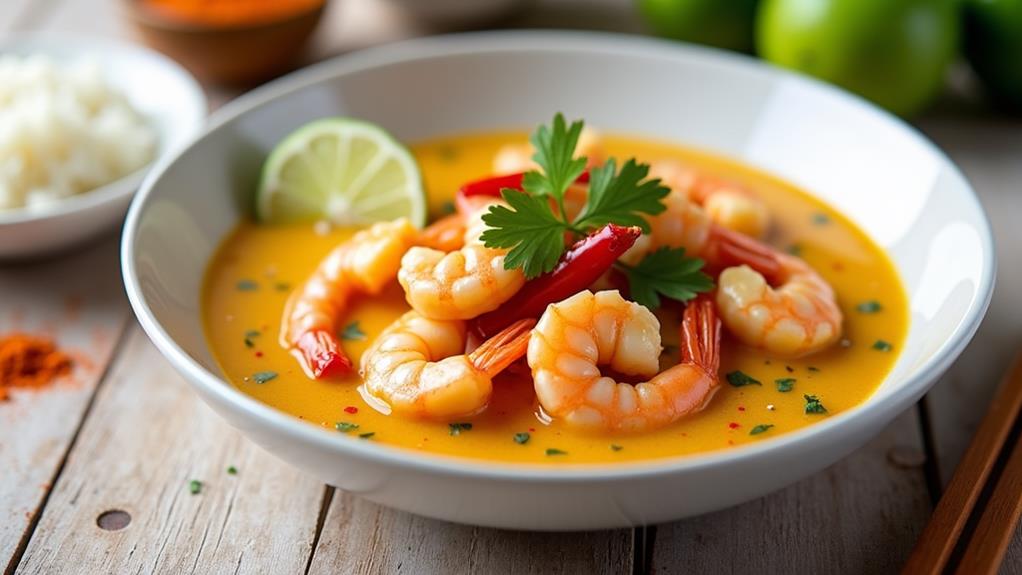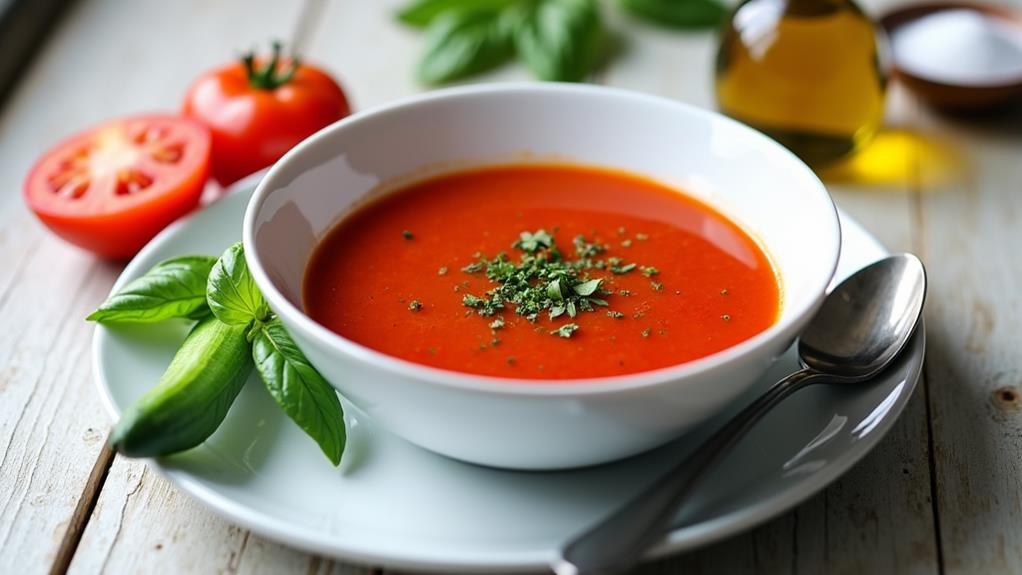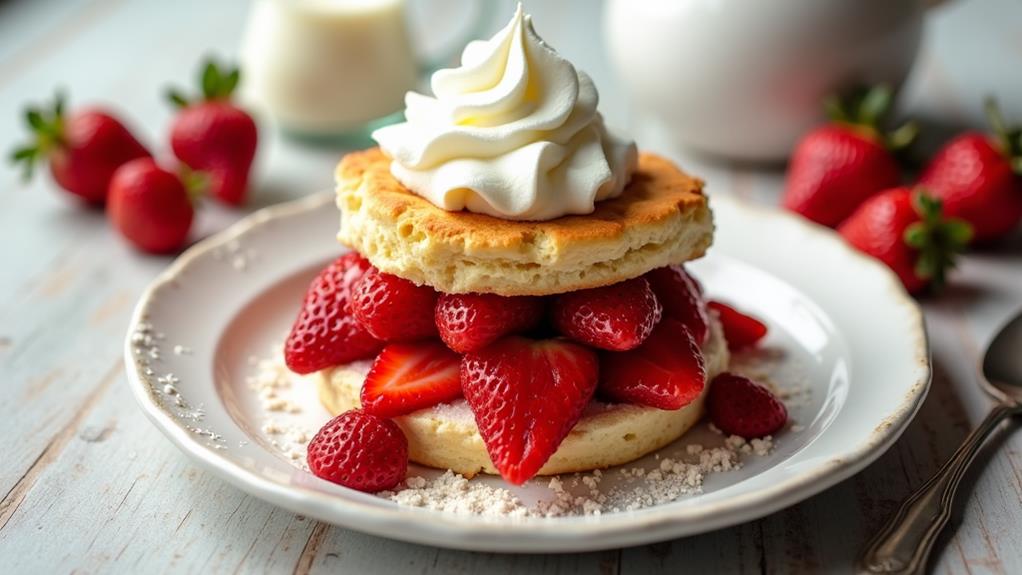You've likely encountered coconut curry shrimp on restaurant menus or in cookbooks, but have you ever considered making it at home? This fusion dish combines the best of Southeast Asian and Indian flavors, creating a meal that's both comforting and exotic. With its creamy coconut base, aromatic spices, and tender shrimp, it's a recipe that's sure to impress. But there's more to this dish than meets the eye. Its history, variations, and cultural significance make it a fascinating subject for food enthusiasts. Let's explore the world of coconut curry shrimp and uncover what makes it so special.
Key Takeaways
- Coconut Curry Shrimp combines coconut milk, curry spices, and shrimp for a rich, flavorful dish.
- The recipe typically includes five key ingredients: shrimp, coconut milk, curry powder, vegetable oil, and lime juice.
- It can be prepared in under 30 minutes, making it ideal for quick weeknight dinners or easy entertaining.
- The dish balances sweet coconut, warm curry spices, and tangy lime juice for a harmonious flavor profile.
- Serve over rice or with naan bread for a complete meal, adjusting spice levels to personal preference.
History
While the exact origins of Coconut Curry Shrimp are unclear, it's likely a fusion dish that emerged from the blending of Southeast Asian and Indian culinary traditions. You'll find that curry has been a staple in Indian cuisine for thousands of years, with its complex blend of spices evolving over time.
Coconut, on the other hand, has been a crucial ingredient in Southeast Asian cooking for centuries, prized for its versatility and tropical flavor.
As trade routes expanded and cultural exchanges increased, these two culinary worlds began to intersect. You can imagine how enterprising cooks might've combined the rich, spicy flavors of curry with the creamy sweetness of coconut milk, creating a harmonious balance that perfectly complemented seafood.
This fusion likely gained popularity in coastal regions where shrimp was abundant and easily accessible. Over time, the dish has been adapted and refined, with different variations emerging across various cultures.
Today, you'll find Coconut Curry Shrimp on menus around the world, a testament to its enduring appeal and the global nature of modern cuisine.
Recipe
Coconut Curry Shrimp is a delicious and easy-to-make dish that combines the rich, creamy flavor of coconut milk with aromatic curry spices and succulent shrimp.
This simplified version of the classic recipe uses just five key ingredients, making it accessible for home cooks of all skill levels.
In less than 30 minutes, you can create a restaurant-quality meal that's perfect for a weeknight dinner or a special occasion. The balance of flavors in this dish is sure to impress, with the sweetness of the coconut milk complementing the warmth of the curry and the freshness of the lime juice.
- 1 pound (450g) large shrimp, peeled and deveined
- 1 can (14 oz / 400ml) coconut milk
- 2 tablespoons curry powder
- 1 tablespoon vegetable oil
- 1/4 cup (60ml) lime juice
Heat the vegetable oil in a large skillet over medium heat. Add the curry powder and cook for about 30 seconds until fragrant. Pour in the coconut milk and bring to a simmer.
Add the shrimp and cook for 3-4 minutes, stirring occasionally, until they turn pink and are cooked through. Remove from heat and stir in the lime juice. Serve immediately over rice or with your choice of side dish.
For best results, be careful not to overcook the shrimp, as they can become tough and rubbery.
If you prefer a thicker sauce, simmer the coconut milk and curry powder for a few extra minutes before adding the shrimp. Feel free to adjust the amount of curry powder to suit your spice preference.
Leftover curry can be stored in an airtight container in the refrigerator for up to 2 days and gently reheated on the stovetop or in the microwave.
Cooking Steps
To prepare this flavorful dish, you'll start by heating oil in a skillet and briefly cooking the curry powder to release its aromatic qualities.
Next, you'll pour in the coconut milk and add the shrimp, allowing them to simmer until they turn a vibrant pink color.
Step 1. Heat Oil in Skillet
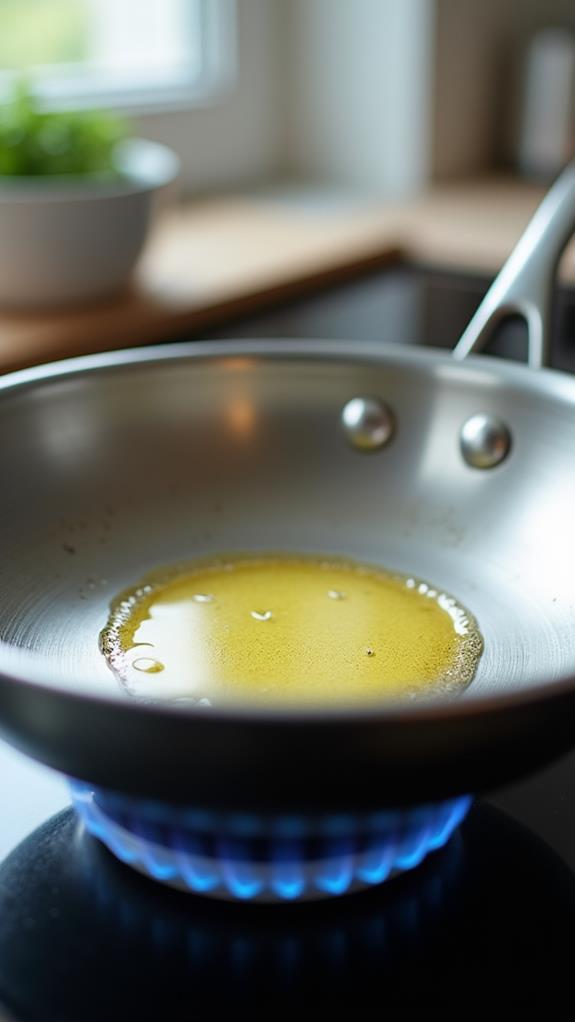
As you begin the cooking process, heat the vegetable oil in a large skillet over medium heat. This step is crucial for creating a flavorful base for your coconut curry shrimp.
Choose a skillet that's large enough to accommodate all the ingredients comfortably, allowing for even cooking and easy stirring.
While the oil heats, you'll notice it becoming thinner and more fluid. This change indicates that it's reaching the ideal temperature for cooking. You don't want the oil to smoke, so keep a close eye on it. If you see wisps of smoke, immediately lower the heat.
Once the oil is hot, you're ready to add the curry powder. This is where the magic begins, as the spices will bloom in the hot oil, releasing their aromatic compounds and intensifying their flavors.
The oil acts as a conductor, helping to distribute the curry powder's flavors throughout the dish. It's essential to use fresh curry powder for the best taste, as older spices can lose their potency over time.
Step 2. Add Curry Powder, Cook Briefly
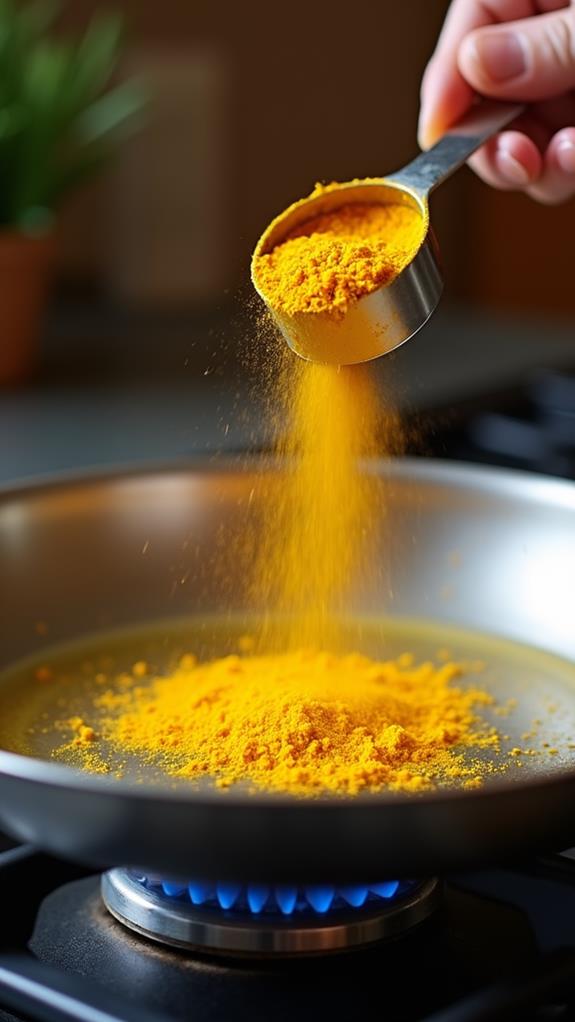
With the oil hot and ready, it's time to add the curry powder to your skillet. Measure out two tablespoons of curry powder and sprinkle it evenly over the heated oil. You'll notice the fragrant aroma immediately filling your kitchen as the spices begin to toast.
Using a wooden spoon or spatula, gently stir the curry powder into the oil, ensuring it's evenly distributed across the bottom of the skillet. This step is crucial as it helps to bloom the spices, releasing their essential oils and intensifying their flavors. Cook the curry powder for about 30 seconds, stirring constantly to prevent burning.
As you're cooking the curry powder, you'll see it darken slightly and become more aromatic. This brief cooking process is essential for developing the depth of flavor in your coconut curry shrimp.
Be careful not to overcook the spices, as they can become bitter if left on the heat for too long. Once the curry powder is fragrant and has been stirred into the oil, you're ready to move on to the next step in creating your delicious curry sauce.
Step 3. Pour in Coconut Milk
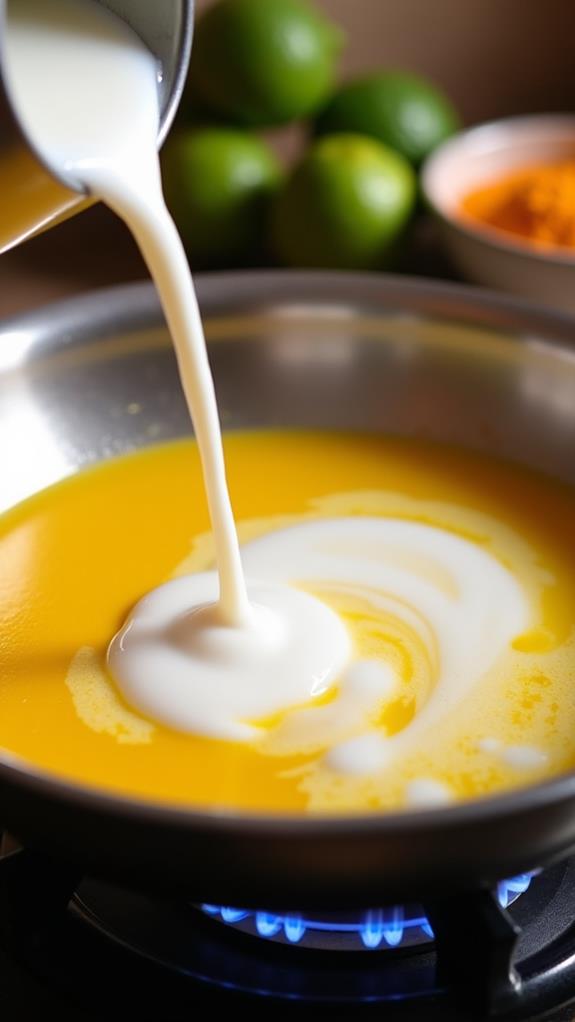
The next crucial step in your coconut curry shrimp journey is adding the coconut milk. After you've sautéed the curry powder for about 30 seconds, it's time to introduce the creamy element that will transform your dish.
Carefully pour the entire can of coconut milk into the skillet, making sure to scrape out any remaining cream that might stick to the sides of the can. As you add the coconut milk, you'll notice the vibrant yellow curry powder begin to blend with the white liquid, creating a beautiful golden hue.
Gently stir the mixture to ensure the curry powder is evenly distributed throughout the coconut milk. You'll want to bring this combination to a simmer, which means you should see small bubbles forming around the edges of the skillet.
This simmering process allows the flavors to meld together and helps the sauce thicken slightly. Keep a close eye on the heat, adjusting it as needed to maintain a steady simmer without boiling.
The coconut milk will infuse your curry with a rich, creamy texture and a subtle sweetness that perfectly complements the aromatic spices.
Step 4. Add Shrimp, Cook Until Pink
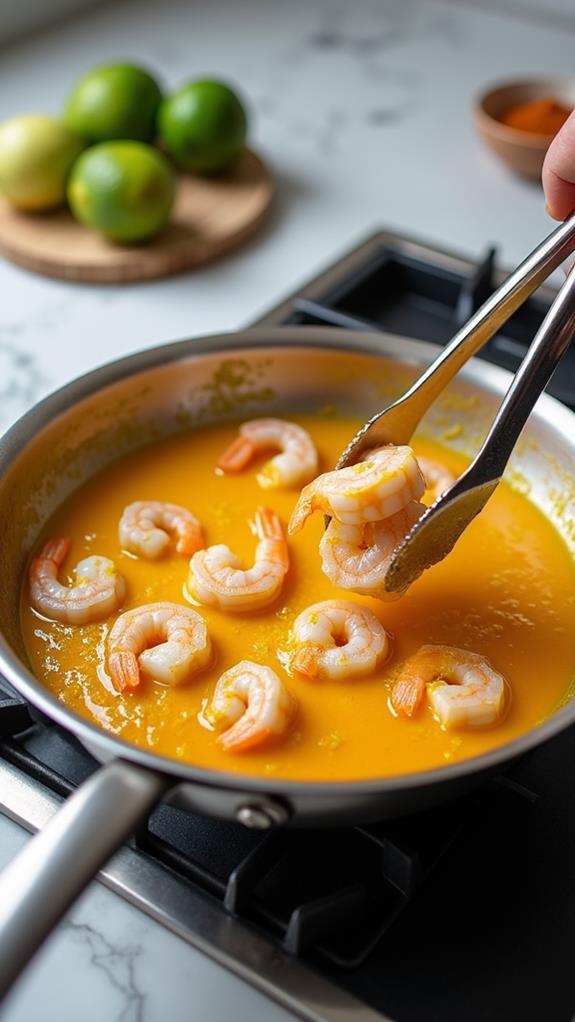
Now that your coconut curry base is simmering, it's time to add the star ingredient: shrimp. Carefully slide the peeled and deveined shrimp into the skillet, ensuring they're evenly distributed in the sauce. As you add them, you'll notice the shrimp's pale, translucent appearance. Don't worry; they'll soon transform before your eyes.
Gently stir the shrimp into the curry, allowing each piece to be coated with the aromatic sauce. Keep a close eye on them as they cook, which should take about 3-4 minutes.
You'll see the shrimp gradually change color, curling into a C-shape as they cook. The telltale sign that they're done is when they turn a vibrant pink or orange hue. Be careful not to overcook them, as this can lead to a rubbery texture.
Once the shrimp are fully pink and opaque, they're ready. Remove the skillet from the heat promptly to prevent further cooking. The residual heat from the sauce will continue to cook the shrimp slightly, so it's better to err on the side of caution and remove them from the heat a bit early.
Step 5. Stir in Lime Juice
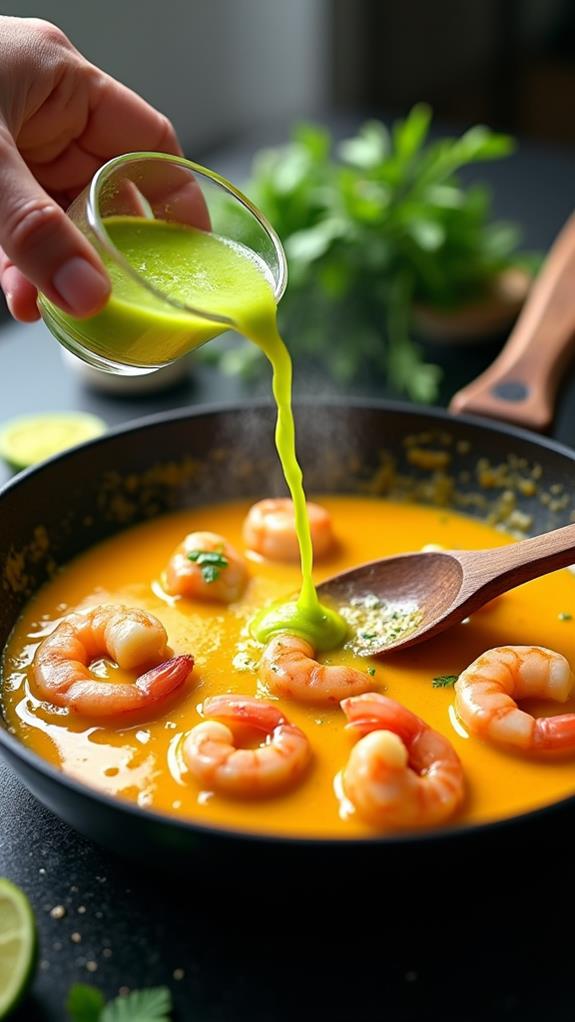
As soon as you've removed the skillet from heat, it's time to add the final touch of flavor. Grab your lime juice and measure out 1/4 cup (60ml). Pour it directly into the skillet, allowing the citrusy aroma to mingle with the warm curry.
Using a wooden spoon or spatula, gently stir the lime juice into the coconut curry shrimp mixture. Make sure you're incorporating it evenly throughout the dish, coating each shrimp with the zesty addition.
The lime juice serves multiple purposes in this recipe. It adds a bright, tangy flavor that cuts through the richness of the coconut milk and complements the warm spices of the curry powder. Additionally, the acidity helps to balance the overall taste profile of the dish.
As you stir, you'll notice the sauce taking on a slightly lighter color. This is normal and indicates that the lime juice is well-incorporated.
Once you've thoroughly mixed in the lime juice, your coconut curry shrimp is ready to serve. The vibrant flavors will continue to meld as you plate the dish, creating a harmonious and delicious meal.
Final Thoughts
Ultimately, this five-ingredient Coconut Curry Shrimp recipe proves that you don't need a long list of ingredients to create a flavorful and satisfying meal. By combining just a few key components, you've crafted a dish that's both impressive and easy to prepare.
The creamy coconut milk, aromatic curry powder, and tangy lime juice work together to enhance the natural sweetness of the shrimp, resulting in a harmonious blend of flavors.
As you've seen, this recipe is highly adaptable. You can adjust the spice level to suit your taste preferences or experiment with different curry powders to create unique flavor profiles.
Don't be afraid to make it your own by adding vegetables or serving it with various side dishes. Remember, the key to success lies in not overcooking the shrimp and balancing the flavors to your liking.
With practice, you'll perfect this dish and have a go-to recipe for busy weeknights or when you're craving something special. Whether you're cooking for yourself or entertaining guests, this Coconut Curry Shrimp is sure to impress with its simplicity and delicious results.

